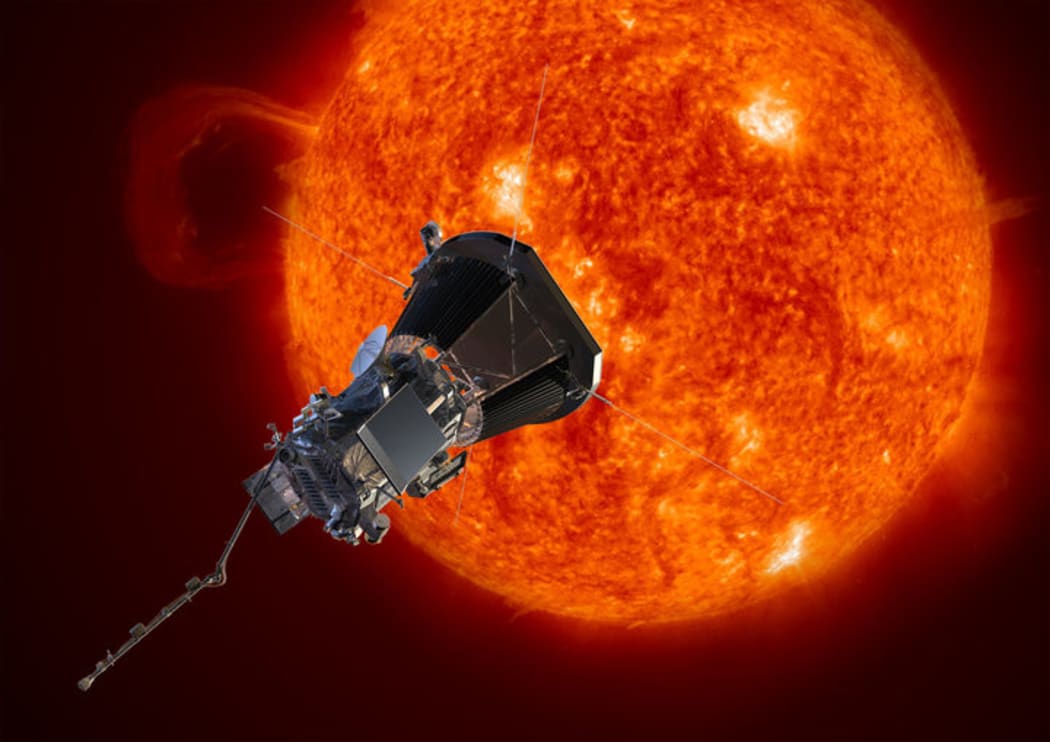Next year a NASA spacecraft will travel to within 6.2 million kilometres of the sun – that's seven times closer than any spacecraft before it and close enough to get very, very hot.

Artist’s concept of the Parker Solar Probe spacecraft approaching the sun Photo: Johns Hopkins University Applied Physics
The specially shielded Parker Solar Probe will have to endure temperatures of more than 1300°C, and solar radiation intensity of almost 500 times higher than Earth.
If all goes according to plan, the probe will zoom close to the sun 24 times between 2018 and 2025, gathering a variety of data about the sun's structure and magnetic and electric fields, as well as the energetic particles cruising towards and away from Earth's star.
At closest approach, it will hurtle around the sun at approximately 700,000 km/h – for context, that's fast enough to get from Wellington to Auckland in three seconds.
The information the probe gathers could help researchers solve two long-standing mysteries: how the solar wind is accelerated and why the sun's outer atmosphere, or corona, is so much hotter than the solar surface.
The difference in temperature between the sun and its corona is confounding, says Eric Christian, a scientist for NASA's Parker Solar Probe mission.
"Normally if you move away from a fire you get colder, but the surface of the sun is only 600C and the corona can get up to a couple of million degrees Celsius. That's a real puzzle.
"The other question we want to answer is how this solar wind – a gas that blows off the sun in all directions at 1.5 million km/h or more – is accelerated up to those high speeds."
Understanding the sun is important for humanity, he says.
"We want to know how it changes, why it changes – and understanding the processes that cause this solar wind in the corona are important to understanding the overall structure of the sun."
Christian hopes data collected by the mission by help predict events such as solar storms, which are disruptive on Earth.
"We've actually been measuring sun spot numbers for over 400 years, but they don't give us the full story. We know from the sun spot numbers that there was a mini ice age in Europe in the 1600s that we think was because the sun just got a little more quiet for some decades. It's about understanding these longer-term trends."
The idea for getting up close to the Sun is as old as the space age, but it's only now that it's possible thanks to technology such as the carbon-fibre carbon-foam heat shield which will protect the probe.
"Behind that heat shield, we're going to be running at room temperature, around 25C."
Eventually, the $1 billion probe will burn up, Christian says.
"As long as the heat shield is between the important part of the spacecraft and the sun then we'll be fine. At some point we'll run out of fuel and will not be able to keep the heat shield always pointed at the Sun and most of the spacecraft will boil off."
The Parker Solar Probe is due to launch in July or August 2018.
If they miss that window there'll be an 18-month wait, he says.
"Because we need to pass by Venus there's only a month out of every 18 months we can launch."

